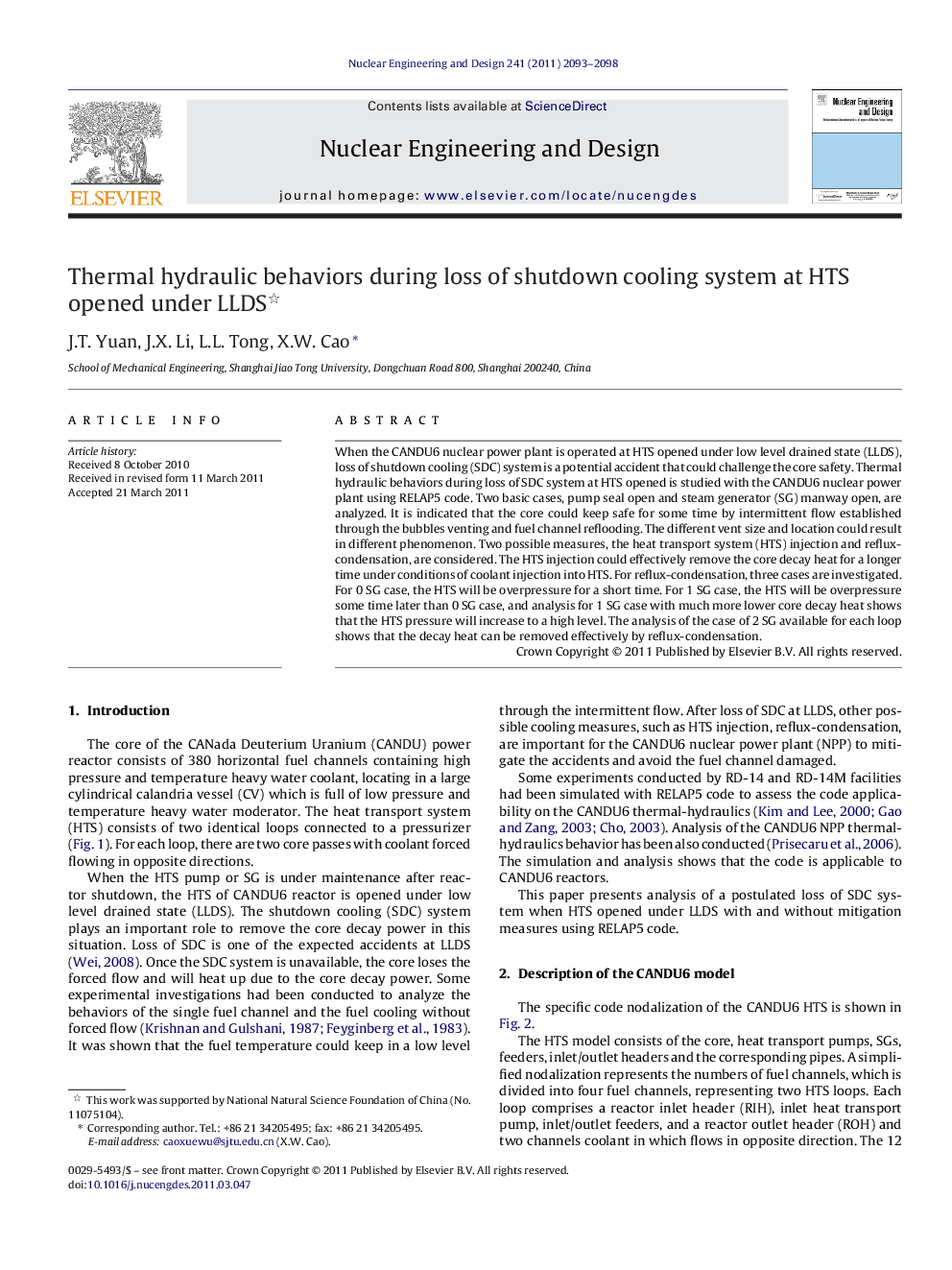| Article ID | Journal | Published Year | Pages | File Type |
|---|---|---|---|---|
| 298103 | Nuclear Engineering and Design | 2011 | 6 Pages |
When the CANDU6 nuclear power plant is operated at HTS opened under low level drained state (LLDS), loss of shutdown cooling (SDC) system is a potential accident that could challenge the core safety. Thermal hydraulic behaviors during loss of SDC system at HTS opened is studied with the CANDU6 nuclear power plant using RELAP5 code. Two basic cases, pump seal open and steam generator (SG) manway open, are analyzed. It is indicated that the core could keep safe for some time by intermittent flow established through the bubbles venting and fuel channel reflooding. The different vent size and location could result in different phenomenon. Two possible measures, the heat transport system (HTS) injection and reflux-condensation, are considered. The HTS injection could effectively remove the core decay heat for a longer time under conditions of coolant injection into HTS. For reflux-condensation, three cases are investigated. For 0 SG case, the HTS will be overpressure for a short time. For 1 SG case, the HTS will be overpressure some time later than 0 SG case, and analysis for 1 SG case with much more lower core decay heat shows that the HTS pressure will increase to a high level. The analysis of the case of 2 SG available for each loop shows that the decay heat can be removed effectively by reflux-condensation.
► Thermal hydraulic behaviors for CANDU6 during loss of SDC at HTS opened are studied. ► For basic cases, core could keep safe by intermittent flow. ► Different vent size and location result in different phenomenon. ► HTS injection could effectively remove the core decay heat for some time. ► 0 SG and 1 SG of reflux-condensation, HTS will overpressure. 2 SG can remove decay heat.
